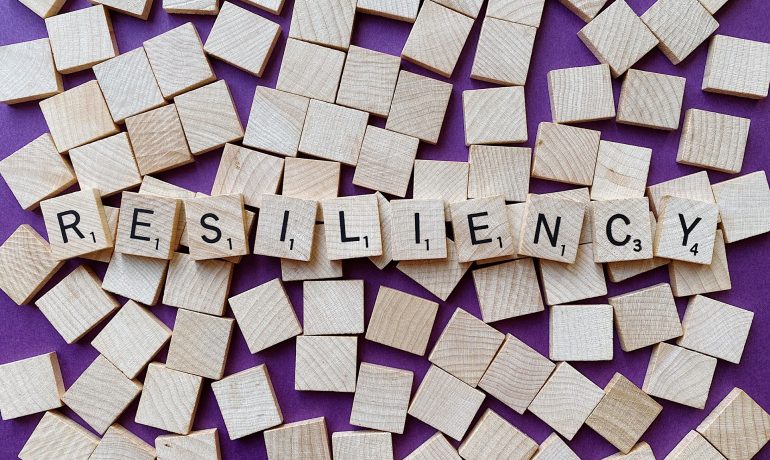In recent posts (here, here and here) we have looked at building corporate or government “resilience” as a way of dealing with the unexpected. Throughout these analyses, it seemed that while building resilience is nearly always a good idea, it is not sufficient on its own as a robust foresight strategy. Approaches to resilience seemed predicated on two basic assumptions, which I would like to challenge.
Firstly, there is a fatalism that suggests that, because the future is unknowable, one should abandon attempts to explore the possibilities and instead simply focus on being able to react to whatever is thrown at you. “Black swans” – inherently “unknown unknowns” – mean that it is impossible to plan for every eventuality, so improving responsiveness is the best one can do.
But we have also seen, in an analysis by the EC Joint Research Council, that “black swans” are in reality very rare indeed. Most startling events could have been – and indeed often were – predicted. It is possible to explore the implications of alternative futures and develop robust plans and contingencies. At its simplest this can be about building “fail-safe” systems or business continuity plans. These may still be vulnerable to a succession of failures (untested back-up systems are often a risk) or unanticipated interactions causing a systemic collapse.
Alternatively we can identify the range of key uncertainties and use those to build alternative views of the future. This scenario approach to futures thinking is what we at SAMI specialise in, and so we know how effective it is. Once the future scenarios are sufficiently well expressed, organisations can test different policies and strategies against them to see how robust they are to the alternative assumptions, and develop a set of contingency plans.
The second unstated assumption is that change is a bad thing and that resilience is about helping you maintain the status quo. This comes from a natural fear of the unknown and a common desire for stability. Resisting the continuous challenges to what we know and the way we do things – our comfort zone – is a common organisational cultural failing. Although we know intellectually that change is inevitable, our initial emotional reaction is to fight it all costs. Many bureaucratic organisations build elaborate systems that are remarkably resistant to change. And, as Machiavelli pointed out, those who lose out from change are much more voluble than those who would benefit from it.
There are many examples of organisations losing out to disruptive challengers mainly because they attempted to maintain what they had rather than accept a changing situation. Kodak inventing – and then failing to exploit – digital photography is one of the more compelling ones. Cannibalising one’s own primary product to prevent it being superseded by a competitor is a difficult decision for finance directors to take – but “eating your own lunch” is better than no lunch at all.
In Taleb’s terms organisations can become “anti-fragile”. The resilient resists shocks and stays the same; the antifragile gets better. Hydra, the Greek mythological creature that has numerous heads, is supremely anti-fragile – when one head is cut off, two grow back in its place.
So a better reaction is to embrace change. Probably incorrectly attributed to Winston Churchill, the quote “never let a crisis go to waste” embodies the thought that times of change create opportunities. They allow – permit, even demand – radical action that would be resisted in “normal” times, seen as too risky. Once the dust settles and the crisis ebbs away, organisations should look to learn from the way new approaches had worked. Did they identify unnecessary, bureaucratic procedures? Were there process innovations that can be rolled out elsewhere? Did new technology play a role? Did some individuals display exceptional skills or strengths that can be put to work on other projects? And, perhaps most importantly, how well had the organisation’s foresight capabilities stood up to the challenge and do they themselves need to be reviewed and revitalised?
Going further, future-adept organisations will actively seek out and create change – even change for change’s sake. Deliberately becoming anti-sclerotic, such organisations remain innovators and market leaders. This is a long way from conventional concepts of “resilience”.
This future focus can go beyond product innovation. Large organisations frequently re-structure themselves – this sometimes being characterised as “re-arranging the deckchairs on the Titanic”. In fact changing organisational roles – for example de-centralising decision-making then re-centralising it – can generate and then systematise new ideas and approaches, creating greater efficiencies or new opportunities. It enables and empowers more adaptable individuals, elevating them through the hierarchy and improving the quality of management.
Organisations can create a culture of future awareness. By moving talented young people into a foresight team for a limited period – say about 6 months – organisations will create a talent pool of people aware of the possibilities of change and appreciative of the need to take on the challenge when it arrives. Organisations of sufficient size may well have departments which map neatly onto the “Three Horizons” model. Finance teams and product managers focus on maximising today’s profits (Horizon 1). Blue-sky thinkers in research departments are generating fundamentally new ideas (Horizon 3). And ideally, a new business team is acting as entrepreneurs (Horizon 2), converting some of the radical ideas into the next generation of profit-makers.
So, while building resilience is a good thing, and the various tips we have reviewed are valuable, at SAMI we see there being other critical aspects that should be built into organisations’ futures readiness plans.
Written by Huw Williams, SAMI Principal
The views expressed are those of the author(s) and not necessarily of SAMI Consulting.
Achieve more by understanding what the future may bring. We bring skills developed over thirty years of international and national projects to create actionable, transformative strategy. Futures, foresight and scenario planning to make robust decisions in uncertain times. Find out more at www.samiconsulting.co.uk.
If you enjoyed this blog from SAMI Consulting, the home of scenario planning, please sign up for our monthly newsletter here and/or browse our website.
Image by Wokandapix from Pixabay


